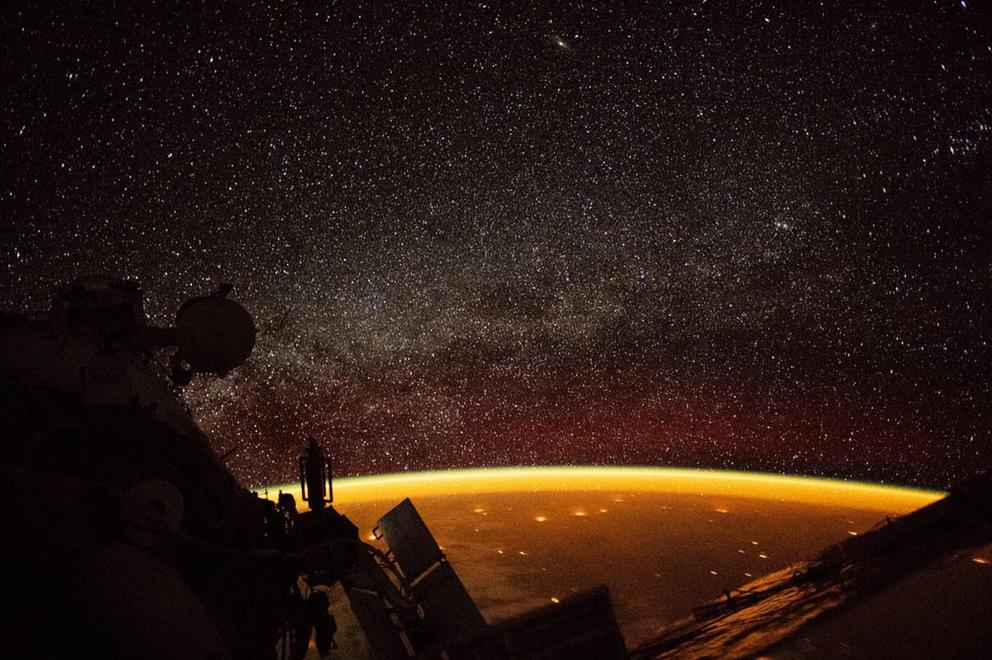NASA image from the International Space Station shows Earth enveloped in a rare 'airglow'
Bright swaths of red in the upper atmosphere, known as airglow, can be seen in this image taken from the International Space Station. NASA's ICON mission, with a planned launch for the summer of 2017, will observe how interactions between terrestrial weather and a layer of charged particles called the ionosphere create the colorful glow.
On October 7, 2018, an astronaut aboard the International Space Station (ISS) captured this incredible image of Earth while orbiting at an altitude of more than 250 miles over Australia.

'The orange hue enveloping Earth is known as airglow, a diffuse bands of light that stretch 50 to 400 miles into our atmosphere,' NASA explained
© NASA
It shows a rare phenomenon known as an airglow, colouring the entire sky.
'The orange hue enveloping Earth is known as airglow, a diffuse bands of light that stretch 50 to 400 miles into our atmosphere,' NASA explained.
'It can help scientists learn about the movement of particles near the interface of Earth and space, including the connections between space weather and Earth weather.'
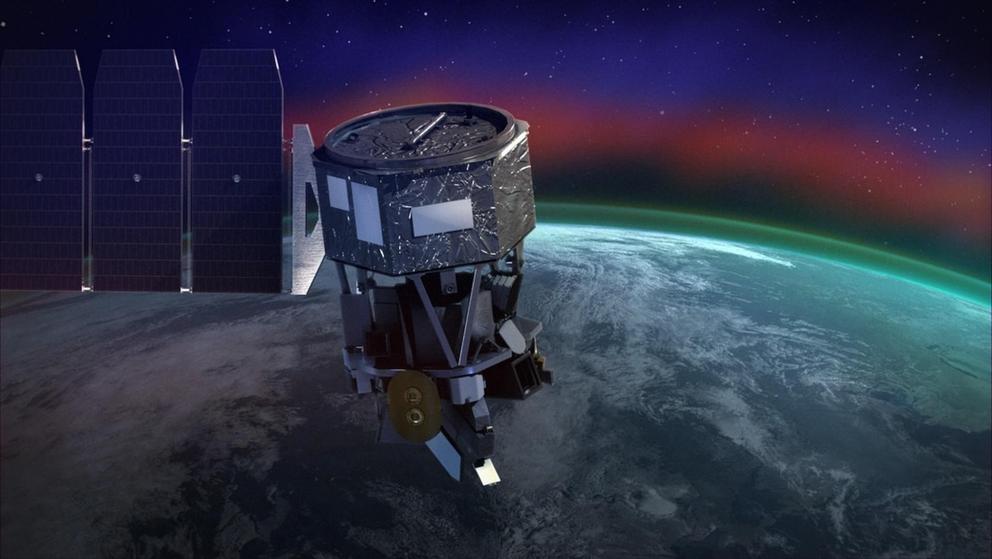
© NASA
Satellites offer one way to study this dynamic zone, and a soon to launch NASA’ satellite known as Ionospheric Connection Explorer (ICON) satellite will help scientists understand the physical processes at work where Earth’s atmosphere interacts with near-Earth space.
It is the latest in a series of stunning space images.
While sunrises on Earth can be impressive, from orbit, they take on a whole new dimension.
These incredible images, taken by European Space Agency astronaut Alexander Gerst are the lateast in a stunning series of images he has taken from the ISS.
However, these are the images that rendered him speechless.
'I don't know any words, in any language, to match the beauty of an orbital sunrise' he said after witnessing the incredible scene.
Last most he captured amazing images of a super typhoon.
'As if somebody pulled the planet's gigantic plug,' he wrote.
'Staring down the eye of yet another fierce storm. Category 5 Super Typhoon Trami is unstoppable and heading for Japan and Taiwan. Be safe down there!'
Gerst attained the unique perspective from 250 miles above the surface, aboard the orbiting International Space Station.
The stunning photo offers a glimpse into the views seen only by the astronauts on the ISS.
Gerst is currently leading the Horizons mission on the ISS, in his second stint at the orbiting lab.
© ESA/NASA-A.Gerst
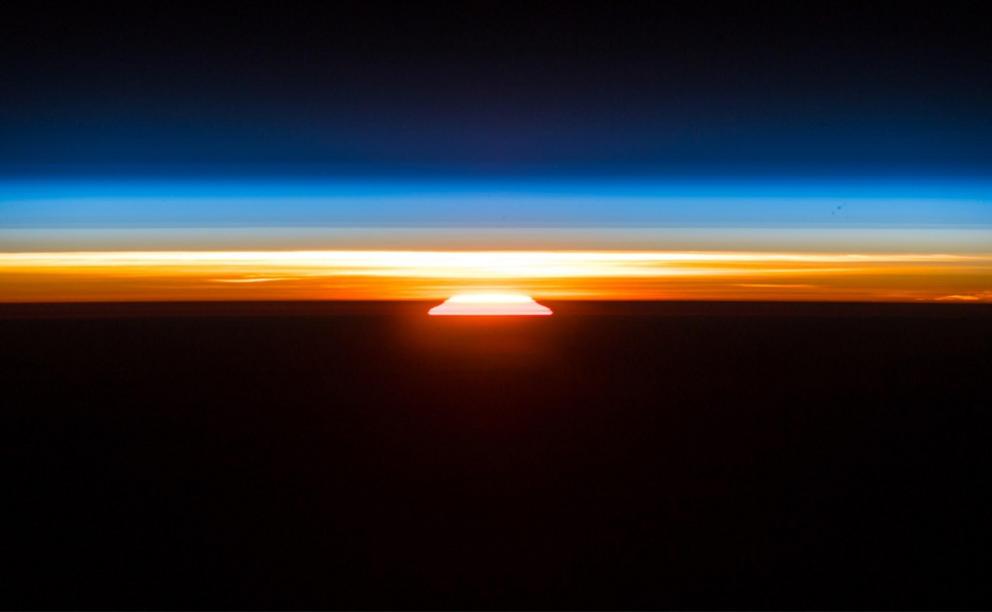
The incredible image is the latest in a series of stunning snaps from space. Pictured, part of a sunrise captured by ESA astronaut Alexander Gerst
© ESA/NASA-A.Gerst
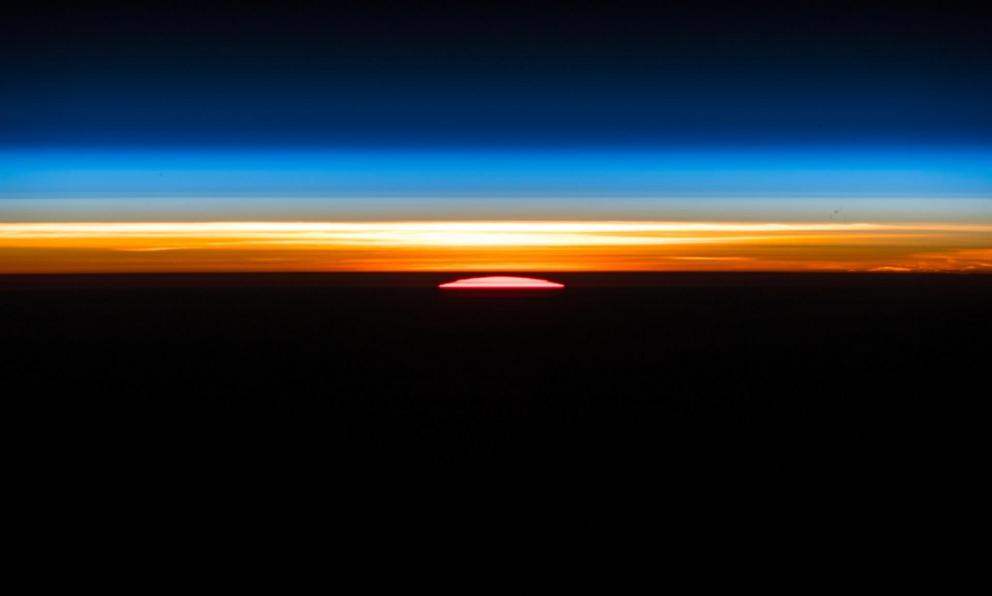
The orbital sunrise begins, with the sun peeking above the horizon
© ESA/NASA-A.Gerst

An orbital sunrise | Eines Sonnenaufgangs im Orbit I don't know any words, in any language, to match the beauty of an orbital sunrise. / Ich kenne kein Wort, in keiner Sprache, das die Schönheit eines Sonnenaufgangs im Orbit auch nur ansatzweise beschreiben könnte.
© ESA/NASA-A.Gerst
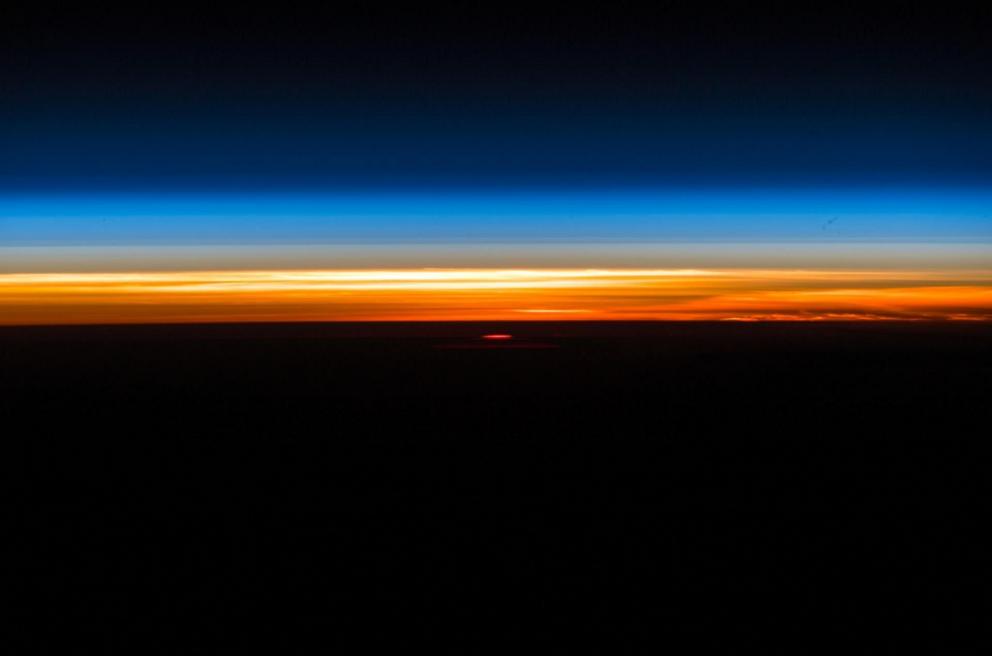
The fist glimpse of the sun above the horizon
© ESA/NASA-A.Gerst
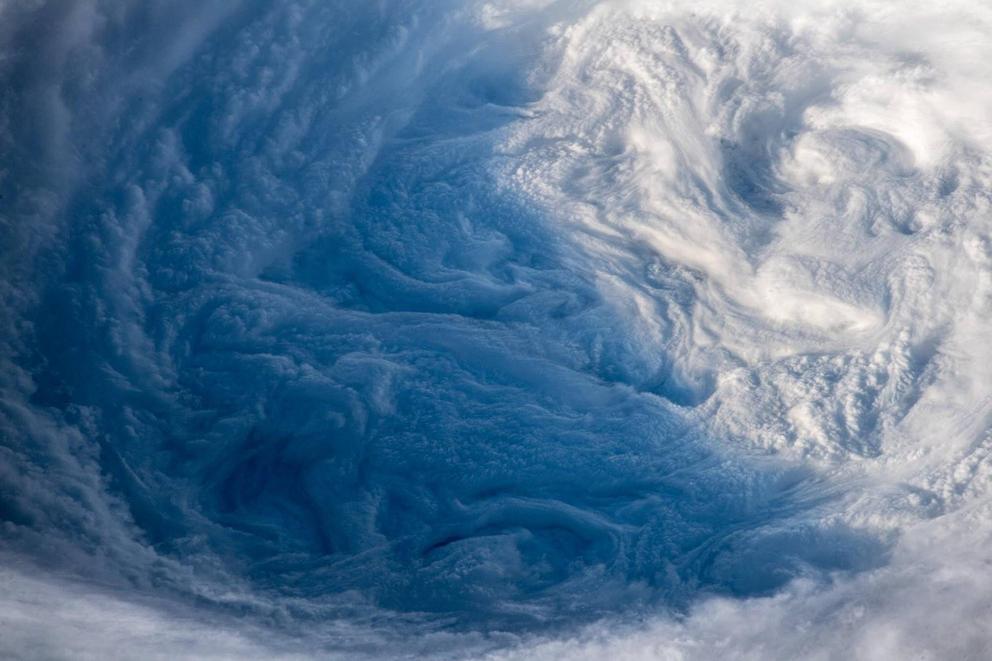
Intense storms such as Super Typhoon Trami often exhibit swirls or vortices within the eye itself, known as 'mesovortices' which are rather like miniature spinning tops trapped within another giant spinning top, which is the typhoon itself.
WHAT IS THE INTERNATIONAL SPACE STATION?
The International Space Station (ISS) is a $100 billion (£80 billion) science and engineering laboratory that orbits 250 miles (400 km) above Earth.
It has been permanently staffed by rotating crews of astronauts and cosmonauts since November 2000.
The space station is currently home to two Russians, three Americans and one Japanese.
Research conducted aboard the ISS often requires one or more of the unusual conditions present in low Earth orbit, such as low-gravity or oxygen.

The International Space Station (file photo) is a $100 billion (£80 billion) science and engineering laboratory that orbits 250 miles (400 km) above Earth
ISS studies have investigated human research, space medicine, life sciences, physical sciences, astronomy and meteorology.
The US space agency, Nasa, spends about $3 billion (£2.4 billion) a year on the space station program, a level of funding that is endorsed by the Trump administration and Congress.
A U.S. House of Representatives committee that oversees Nasa has begun looking at whether to extend the program beyond 2024.
Alternatively the money could be used to speed up planned human space initiatives to the moon and Mars.
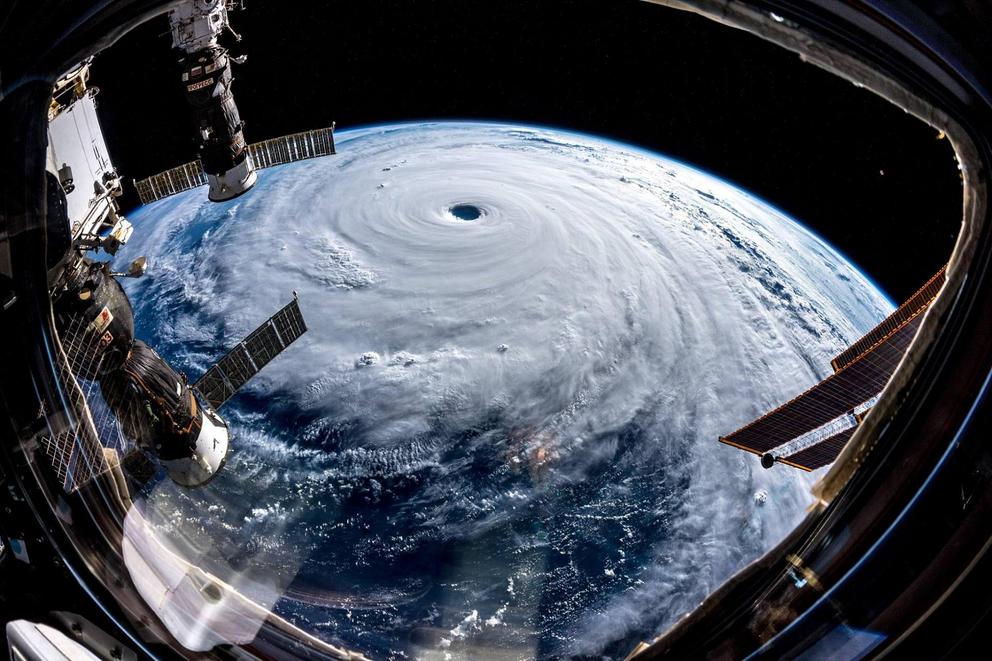
© ESA/NASA-A.Gerst
He previously shared a stunning timelapse of what it’s like to fly over Earth at speeds unimaginable to the average person.
The video shows an incredible view of the trip over Alaska to the Andes in 260 seconds.
The crews aboard the space station frequently share updates on their life hundreds of miles above the surface, showing what it’s like to live and work in orbit for months on end.
In the past, they’ve revealed stunning views of everything from auroras to moon-sets.
Earlier this month, Russian cosmonaut Oleg Artemyev released a video of the narrow tunnels astronauts must traverse to navigate the ISS.
And, it’s not an environment for those put off by small spaces.
The video showed a brief trip through the longest route on the ISS, passing through the main section where the astronauts spend most of their time, to the cafeteria, the Russian section, and the storage and service modules.
The $100 billion orbiting lab is currently home to a crew of six, including geophysicist and volcanologist Gerst.

